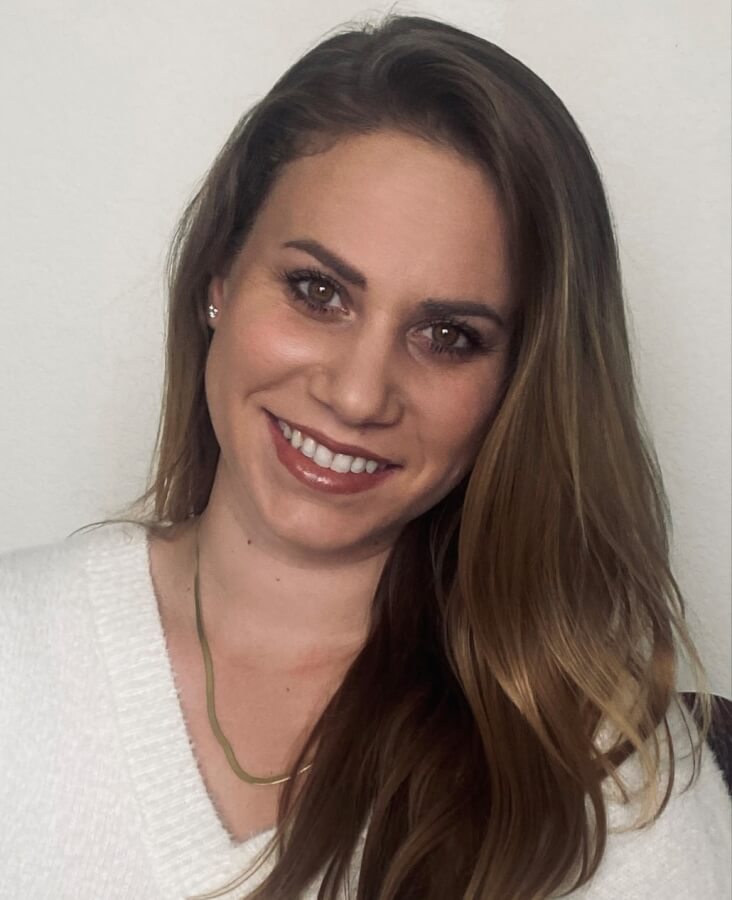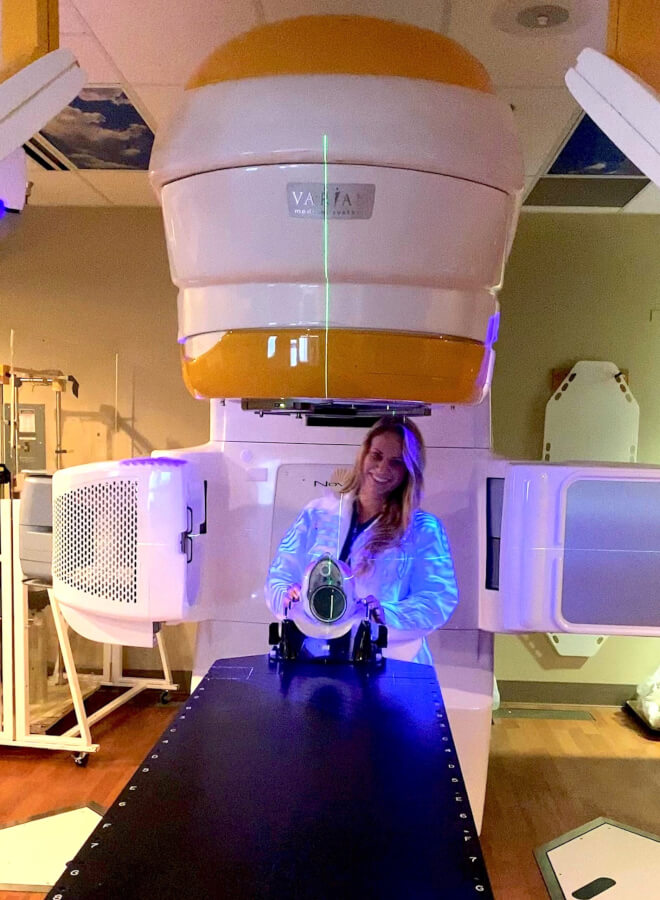Victoria Bry has always aspired to understand how the world works and was naturally drawn to science from an early age, especially physics.
“I love physics because it helps us understand everything; from how electronics work, to how our lungs and brain and bodies function, to why we have earthquakes and even the makeup of our solar system,” Bry said.

After receiving her bachelor’s degree in physics from Colorado College, she discovered the field of medical physics, which is the application of physics in medicine, predominantly in the areas of nuclear medicine, radiology and radiation oncology. Her first involvement in this field included a volunteer opportunity at San Diego State University. She then obtained a paid position as a medical physics research assistant at the University of California in San Diego, where she gained hands-on experience learning everything from the biological foundation of radiation therapy to the clinical treatment planning process.
She then decided to pursue a PhD and was accepted to the UT Health San Antonio’s Graduate School of Biomedical Sciences in the Radiological Sciences PhD Program in the fall of 2018, where she has been working to become a radiation oncology medical physicist.
“UT Health San Antonio was one of my top choices as it is one of the first initially accredited medical physics programs in the country,” she said.
Bry’s studies were guided under the mentorship of Karl Rasmussen, PhD, assistant professor in the Department of Radiation Oncology. As part of her graduate didactic training and research, she worked at the Mays Cancer Center with physicists, medical doctors, radiation therapists, dosimetrists and others.
Her research focused on a technique called surface guided imaging, a technology that uses light to create motion maps of the external surface of a patient’s body. Surface imaging cameras are adjusted and customized based on reflections to provide 3D information about the patient’s position before and during radiation delivery, allowing for accurate delivery of the prescribed treatment.

“Our research has demonstrated that the surface imaging system at the Mays Cancer Center has comparable accuracy to X-ray imaging and it is advantageous because it does not require additional imaging radiation. This system provides us with sub-millimeter accuracy about the positioning of patient’s surface that we have not had in the past, allowing us to deliver treatments more confidently,” Bry said. “Since this is a more recent technology, research is in high demand to understand its implementation and scope of use. My research examines its accuracy, limitations and methods for optimal use for specialty applications in radiotherapy.”
Bry’s dissertation work investigated the accuracy and limitations of surface imaging for its implementation for stereotactic radiosurgery (SRS). Her work also investigated an unexplored method to calibrate the surface imaging cameras for different skin tones to ensure optimal use for all populations.
“A clinical medical physicist oversees the technical aspects of the radiation treatment delivery. This includes quality assurance testing to ensure accuracy of the equipment we use for radiation delivery, reviewing patient treatment plans to ensure optimal target coverage of radiation to a patient’s tumor, treatment planning for special procedures (brachytherapy or SRS), implementation of new technology and much more,” Bry explained.
Bry has completed her dissertation and all her coursework, and now anxiously awaits walking the stage on May 21 and earning her degree.
During her time in the Graduate School of Biomedical Sciences, Bry’s work was published multiple times. She is especially proud of co-authoring a chapter in the first-ever textbook dedicated to surface guided radiation therapy. She has also received several grants, including being selected as TL1 Scholar and earning an award from the Cancer Prevention and Research Institute of Texas. She has enjoyed serving on multiple committees at the school and creating positive change within her department, most notably through a workshop she organized to educate medical physics students on aspects of patient communication.
“I’ve had an overall very positive experience here,” Bry said. “I’ve had the opportunity to work with successful scientists of multiple fields, and our school provided an open and collaborative environment where students were encouraged to always keep asking questions. The GSBS has always been extremely supportive, especially with all the events they put on for us. It shows that they care, and I think that’s been very important during these stressful years.”
After graduation, Bry will begin a radiation oncology medical physics residency program in July at the University of Washington in Seattle, where she will eagerly apply what she has learned in her PhD program.

